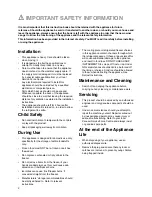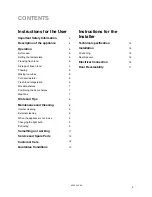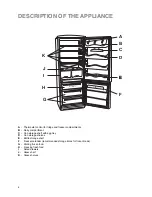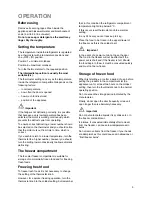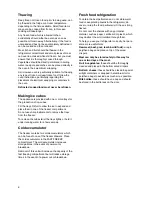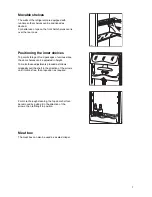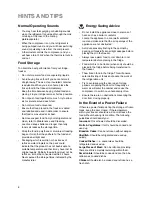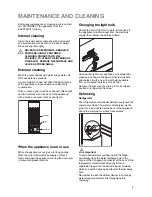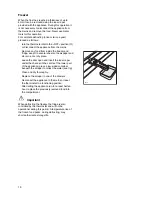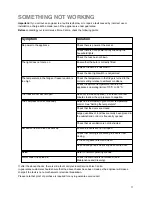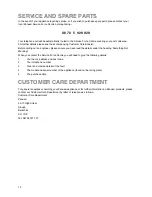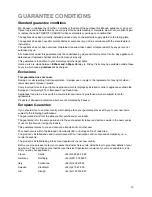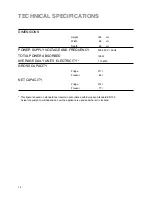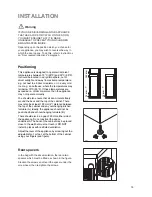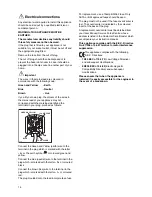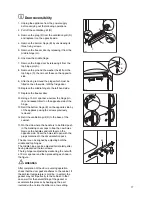
Fresh food refrigeration
To obtain the best performance, do not store warm
food or evaporating liquids in the refrigerator; do
cover or wrap the food, particularly if it has a strong
flavour.
Do not cover the shelves with any protective
material, such as paper, cardboard or plastic, which
may obstruct the air circulation through them.
To help you use your refrigerator correctly, here are
some more useful hints:
Raw meat (beef, pork, lamb & wild fowl):
wrap in
polythene bags and place on top of the salad
crispers.
Meat can only be stored safely in this way for
one or two days at the most.
Fruit & vegetables:
these should be thoroughly
cleaned and placed in the bottom salad crispers.
Butter & cheese:
these should be placed in special
airtight containers or wrapped in aluminium foil or
polythene bags to exclude as much air as possible.
Milk bottles:
these should have a cap and should
be stored in the bottle rack on the door.
6
Cold accumulator
The freezer contains two cold accumulators which
can be found in one of the freezer drawers. Place
the cold accumulator in the FAST FREEZE
compartment. The cold accumulator increases
storage times in the event of power cut or
breakdown.
Removal of this unit will increase the capacity of the
fast freezing compartment but will reduce storage
times in the event of a power cut or breakdown.
Thawing
Deep frozen or frozen food, prior to being used, can
be thawed in the fridge or at room temperature
depending on the time available. Small food items
may even be cooked from frozen; in this case
cooking will take longer.
Any frozen food which is allowed to thaw
accidentally should either be eaten as soon as
possible or thrown away. Alternatively, if the food is
uncooked and has not been completely defrosted it
can be cooked and then refrozen.
Meat, fish and fruit should be thawed in the
refrigerator compartment and small pieces of meat
can even be cooked while still frozen, but you must
ensure that it is thoroughly cooked through.
Vegetables should be directly immersed in boiling
water; ready-cooked dishes can be placed directly in
the oven in their aluminium wrapping.
A microwave oven is particularly suitable for thawing
any type of frozen or deep-frozen food: follow the
oven instructions, particularly regarding the
placement of aluminium wrapping or containers in
the oven.
Defrosted cooked food must never be refrozen.
Making ice cubes
The appliance is provided with one or more trays for
the production of ice-cubes.
Fill the trays 3/4 full to allow the ice to expand and
place them in one of the freezer compartment.
Do not use sharp instruments to remove the trays
from the freezer.
To remove the cubes twist the tray slightly or hold it
under running water for a few seconds.


